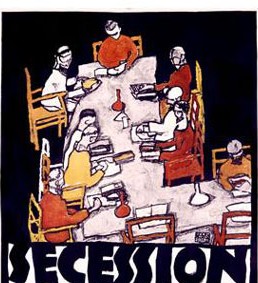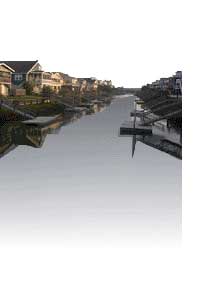|

Secession was put on the ballot by a state board, the Local Agency Formation Commission.
It acted on petitions sponsored by Valley Voters Organized Toward Empowerment (Valley VOTE) and signed by more than 200,000
residents. After a lengthy study, LAFCO ruled that the Los Angeles portion of the Valley has ample resources to be a city
under state law and that the city of Los Angeles would not suffer financially. Los Angeles officials dispute the findings.
Secession -- Measure F on the lengthy Nov. 5 ballot -- needs a majority of votes in
the Valley and all of Los Angeles to pass. Valley voters alone will vote on Measure G to select a name for the proposed
city, from a list submitted by secession proponents: San Fernando Valley, Rancho San Fernando, Mission Valley, Valley City
and Camelot. Valley voters will also choose among candidates for mayor and city council.
Passage would create a new municipality of 211 square miles with about 1.35 million residents.
Los Angeles would slip to third in the U.S. in population, behind Chicago. A new Valley city would rank sixth, just ahead
of Phoenix. The city would begin operation July 1, 2003.
Secession movement
In 2002, Los Angeles residents defeated a proposal under which the San Fernando Valley portion of the City of Los Angeles would have seceded and become an incorporated city of its own. Had the proposal passed,
it would have created a new municipality of 211 square miles with about 1.35 million residents. Los Angeles
would have slipped to third in the U.S. in population, behind Chicago. The new Valley City
would have ranked sixth, just ahead of Phoenix.
The Valley attempted
to secede in the 1970s, but the state passed a law barring city formation without the approval of the City Council.
In 1997, Assemblymen Bob Hertzberg and Tom McClintock helped pass a bill that would make it easier for the Valley to secede by removing the
City Council veto. AB 62 was signed into law by Governor Pete Wilson. Meanwhile, a grassroots movement to split the Los Angeles Unified
School District (LAUSD) and create new San Fernando Valley-based school districts became the focal
point of the desire to leave the city. Though the state rejected the idea of Valley-based districts, it remained an important
rallying point for Hertzberg's mayoral campaign, which proved unsuccessful.
Before secession
could come out for a vote, the Local Agency Formation Commission (LAFCO) studied the fiscal viability of the new
city and decided that the new city must mitigate any fiscal loss incurred by the
rest of Los Angeles. LAFCO concluded that a new San Fernando Valley city would be financially viable, but
would need to mitigate the $60.8 million that Los Angeles would lose in revenues. Secessionists took this figure as evidence that the Valley gives
more money to Los Angeles than it received back in services. This triggered a petition drive led by Valley VOTE to put secession on the ballot. Measures F and H would not only decide whether
the Valley becomes a city but voters also get to pick a new name for it. The proposed names on the ballot were as follows:
San Fernando Valley, Rancho San Fernando, Mission Valley,
Valley City
and Camelot. Along with Measures F and H, elections were held for fourteen council members and a mayor.
Opponents claimed
that secession was motivated by racist and class-based factors. Valley politicians such as State Senator Richard Alarcon and
City Council President Alex Padilla opposed the initiatives. The leader of the LAUSD breakup and former congresswoman
and busing opponent Bobbie Fiedler also campaigned against secession. Supporters pointed out that the Valley suffers from
the many of the same problems of poverty, crime, drug and gang activity as the rest of the city.
The proposal
passed with a slight majority in the Valley, but defeated by the rest of Los Angeles voters due to a heavily-funded campaign against it led by Los Angeles mayor James Hahn. Republican Assemblyman Keith Richman of Northridge was voted in as mayor of the stillborn city. Richman and other activists
behind the secession movement attempted to redirect their civic energies toward influencing Los Angeles city politics, but their efforts largely fizzled. Hertzberg's 2005 mayoral campaign,
which received heavy support in the Valley, nonetheless finished in third place (only a few percentage points behind incumbent
Mayor Hahn), and no secession supporters were elected to positions on the Los Angeles City Council.
Many neighborhoods of Los Angeles in the San Fernando Valley
have 'seceded' from one another in the form of renaming and reforming known community boundaries. Groups are motivated by
the desire to disassociate themselves from undesirable connotations that some communities have inherited and, in the process,
increase property values. Lake Balboa recently broke away from Van Nuys. Valley Village and Valley Glen separated from North
Hollywood. West Hills and Winnetka from Canoga Park. Arleta successfully broke off from Pacoima but thwarted in its attempts
to carve out a separate ZIP code. The separate districts are in name only as none of the communities have actual governmental authority.
Many neighborhoods of Los Angeles in the San Fernando Valley have 'seceded' from
one another in the form of renaming and reforming known community boundaries. Groups are motivated by the desire to disassociate
themselves from undesirable connotations that some communities have inherited and, in the process, increase property values.
Lake Balboa recently broke away from Van Nuys. Valley Village and Valley Glen separated from North Hollywood. West Hills and
Winnetka from Canoga Park. Arleta successfully broke off from Pacoima but thwarted in its attempts to carve out a separate
ZIP code. The separate districts are in name only as none of the communities have actual governmental authority.
|
